The Amateur Mycologist - 14 (!) Mushroom Species - Taricha torosa, A Deadly Poisonous Newt - And Ceanothus gloriosus, Perfect Native Flowers.
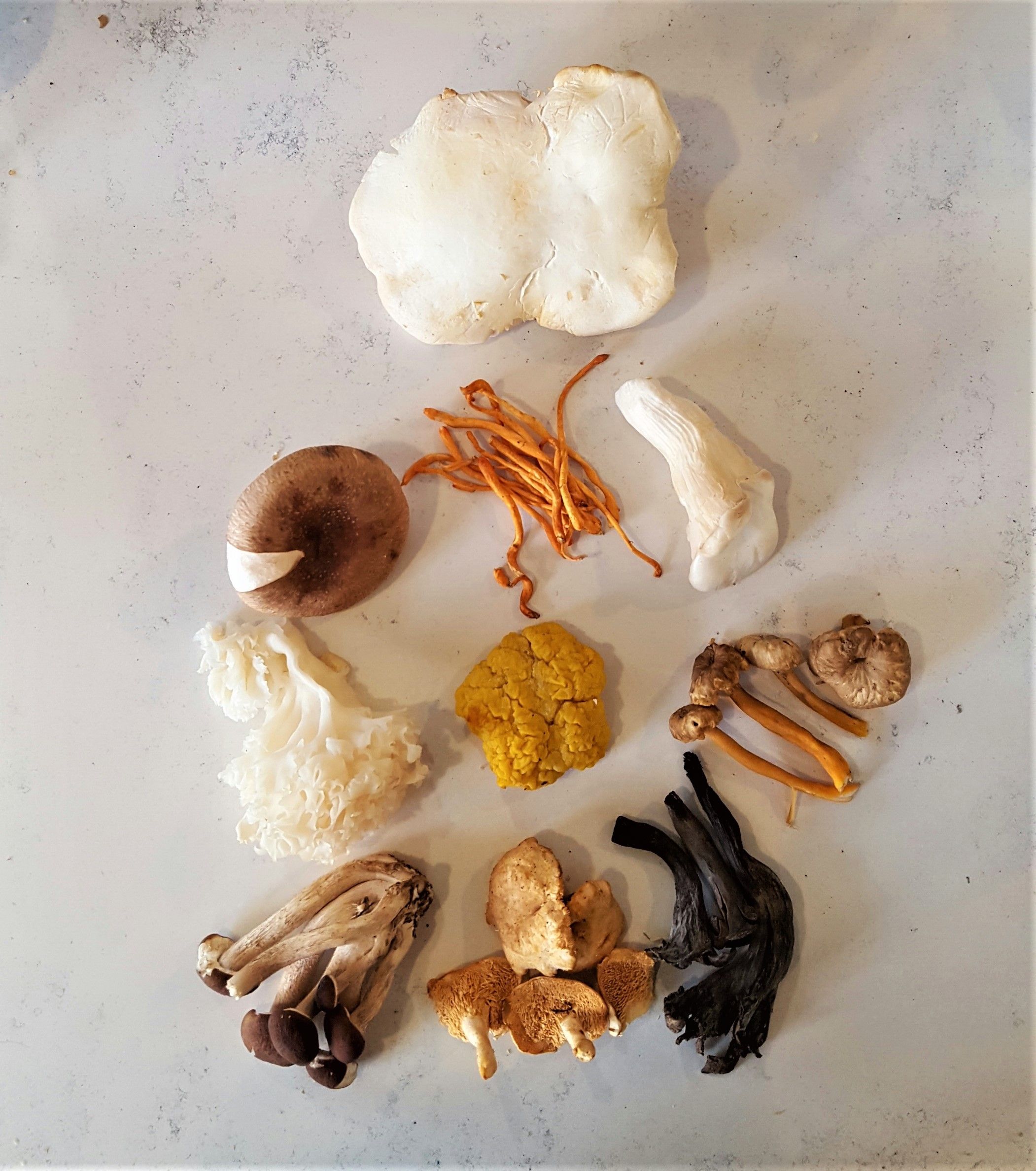
Look at all those mushrooms!
I would love to say that I found all of these in the forests of Northern California and Oregon, but that would be a lie. Not only a lie, but a really stupid lie. At least two of the mushrooms in the above photo are not even grown in the United States, but rather cultivated or collected in China, Nepal, and other parts of Asia.
Almost all of the species pictured here, along with one other, the Nameko mushroom, were actually purchased from a local supermarket. If you find yourself in the Bay Area and enjoy learning about fungi, there might not be a better, easier place to get hands on experience than The Berkeley Bowl Marketplace. They have, hands down, the most impressive array of fungi for sale that I have ever encountered, by a large margin.
They rely on a combination of wild foraged and cultivated species - and the former tend to vary pretty wildly. I went to the market on our second day and by the end of the week at least a couple of species had disappeared and not been replenished, as sometimes happens with wild foraged supplied fungi.
Not to harp too heavily on Berkeley Bowl, but the prices were all pretty excellent as well. The quality was mixed, but generally if you keep an eye out for recent deliveries, you can get amazingly fresh mushrooms. The Nameko I bought, as will be expounded upon in detail in the coming days and weeks, was super firm and still intensely sticky to the touch.
Now, I didn't go to California intending to collect fungus only in the supermarket, but that's just how it turned out. Only one of the 14 species I "collected" was found at the top of a large redwood park, however it was, in general, all very dry where we were staying, until the day we left anyway, and as a result, most of our walks resulted in finding just a wide variety of dried out lichens.
Take this green one for example.
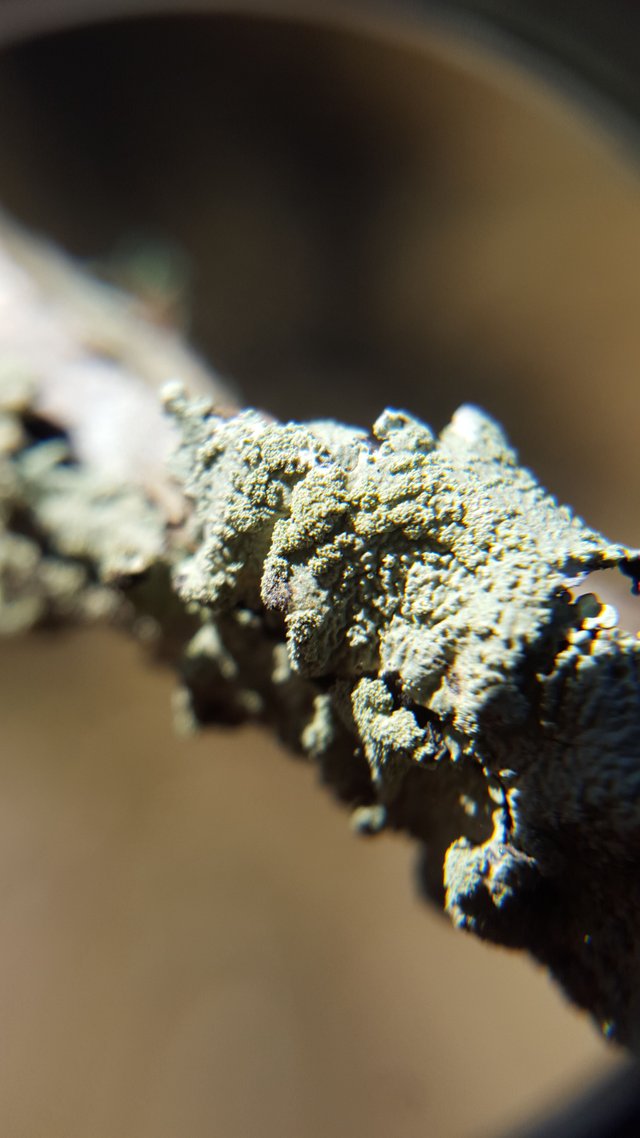
Although I've included information links to over 13 different species in this post, this lichen is not one of them.
If I'd thought ahead, I might have purchased a Field Guide To California Lichens, but I did not. For those of you interested in making a slightly educated guess, or identifying other lichens in the states, consider The CNALH at Lichenportal.org or, for California specific inquiries, The California Lichen Society. Two more super specific, fairly comprehensive resources added to the list.
Like Geneva and the nearby area in France, lichens were absolutely everywhere in the Bay Area, and often quite varied in their coloration and texture. In general, the Bay Area has very good air quality and a minimum of acid rain, both of which likely help in maintaining a very healthy collection of lichens.
Over the next few weeks i will be doing full species posts on each and every one of these awesome mushroom species, probably at a rate of once a week.
However, beyond the world of fungi, the trip also included a wide variety of floral and animal life. Here are the highlights photo wise.
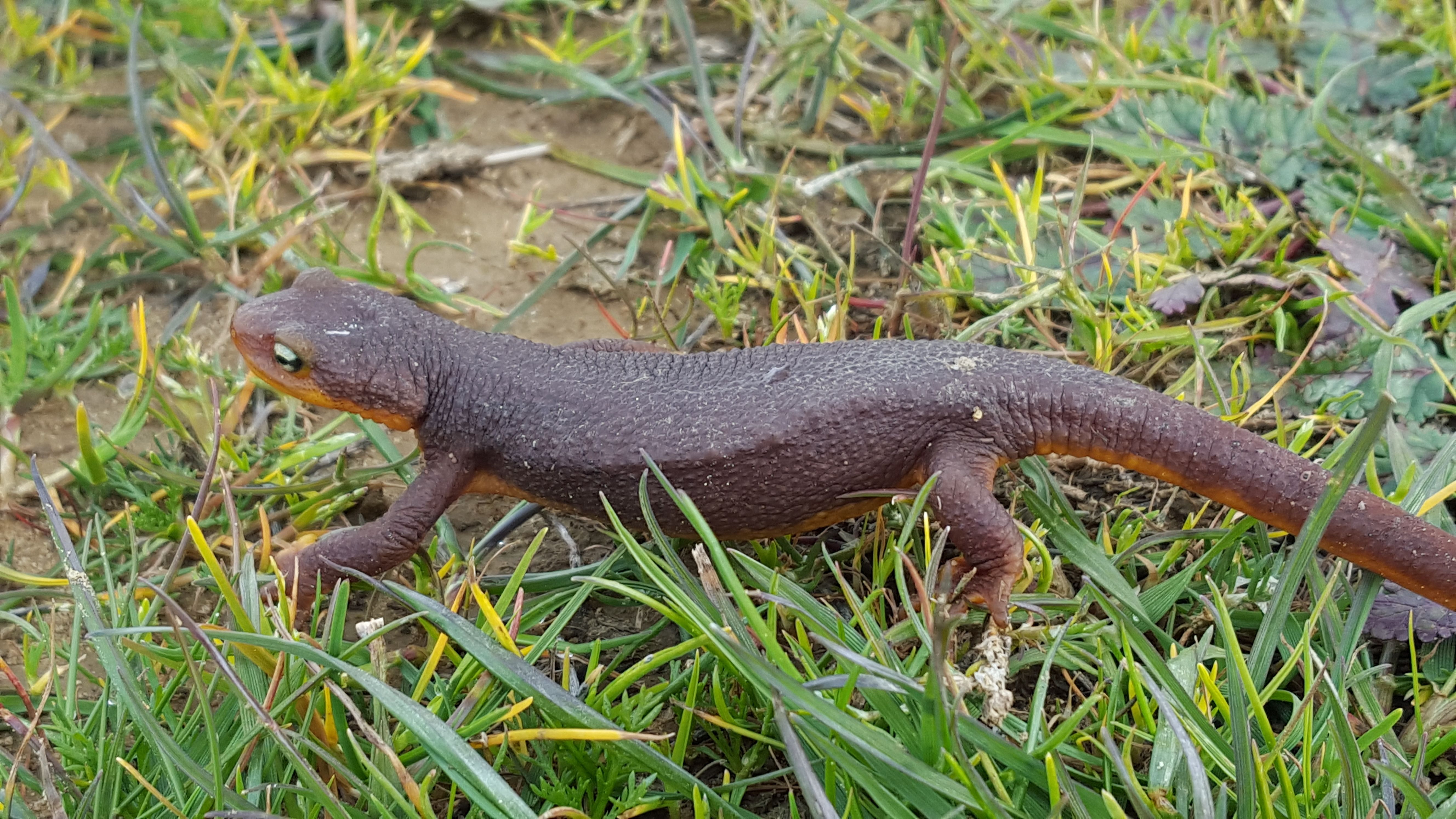
Here we have Taricha torosa, the California Newt
My wife very nearly stomped on this guy by accident on one of our many hikes. Thankfully tragedy was avoided and instead the little fella just stopped dead in his tracks and waited. Interestingly, he must not have been particularly flummoxed by the encounter as he did not take the defensive posture of the species, which involves them lifting their heads high up and tilting them backwards to reveal the brightly colored yellow underside.
In this case, the newt let me get pretty close in. I probably could have gotten out the jewelers loupe if I was more comfortable around the little dude, but I'm not used to photographing things with legs, let alone a mouth, and truth was he weirded me out a bit.
Still, I think this photo hits all the necessary marks for the species. It's general brown coloration, the hint of the yellow underside, and the yellow/green coloration on the top of the eye. It was crossing a hiking trail and had dried out substantially, so it lacked a sheen on its skin.
Thankfully, we did not eat the newt, as it was likely SUPER DEADLY if ingested.
The skin of the California Newt secretes tetrodotoxin. That's the same stuff that's found in the deadly pufferfish often enjoyed as a delicacy in Japan. However, there is no safe way to prepare a California Newt, and eating it will almost certainly kill you. In fact, the newt has only one snake as a natural predator, and that snake has developed a resistance to the toxin. This little guy may look harmless, but if you try to make a meal out of him, you will die.
One of the highlights of the trip was really the flowers. They were all over Golden Gate park and immensely beautiful.
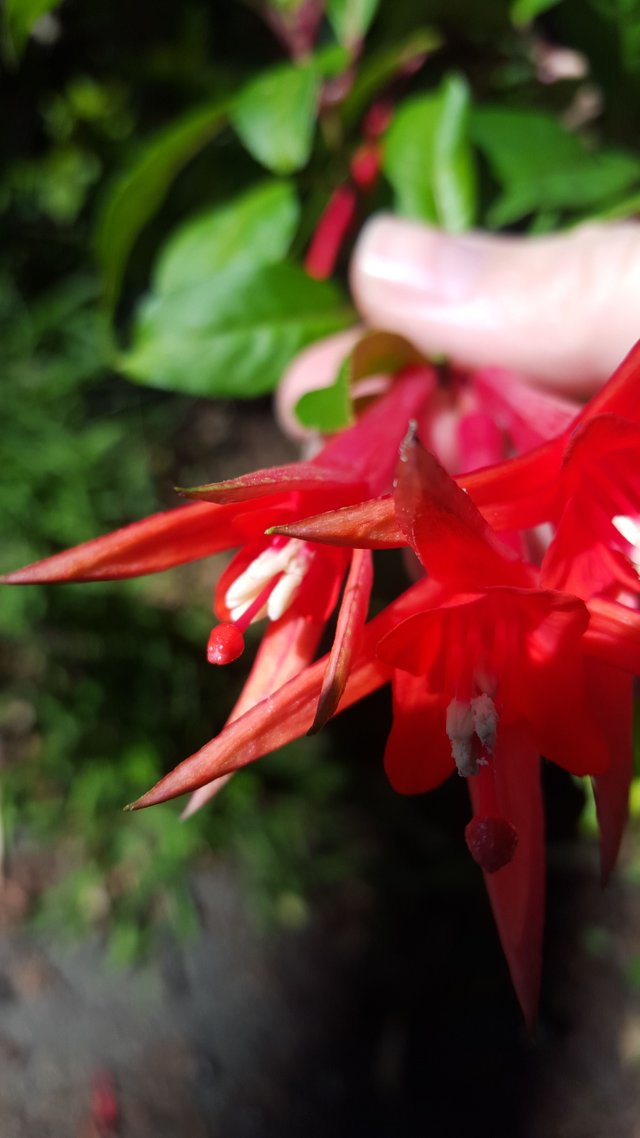
This was one of several Cactus flowering at the time of our visit. I don't know the species.
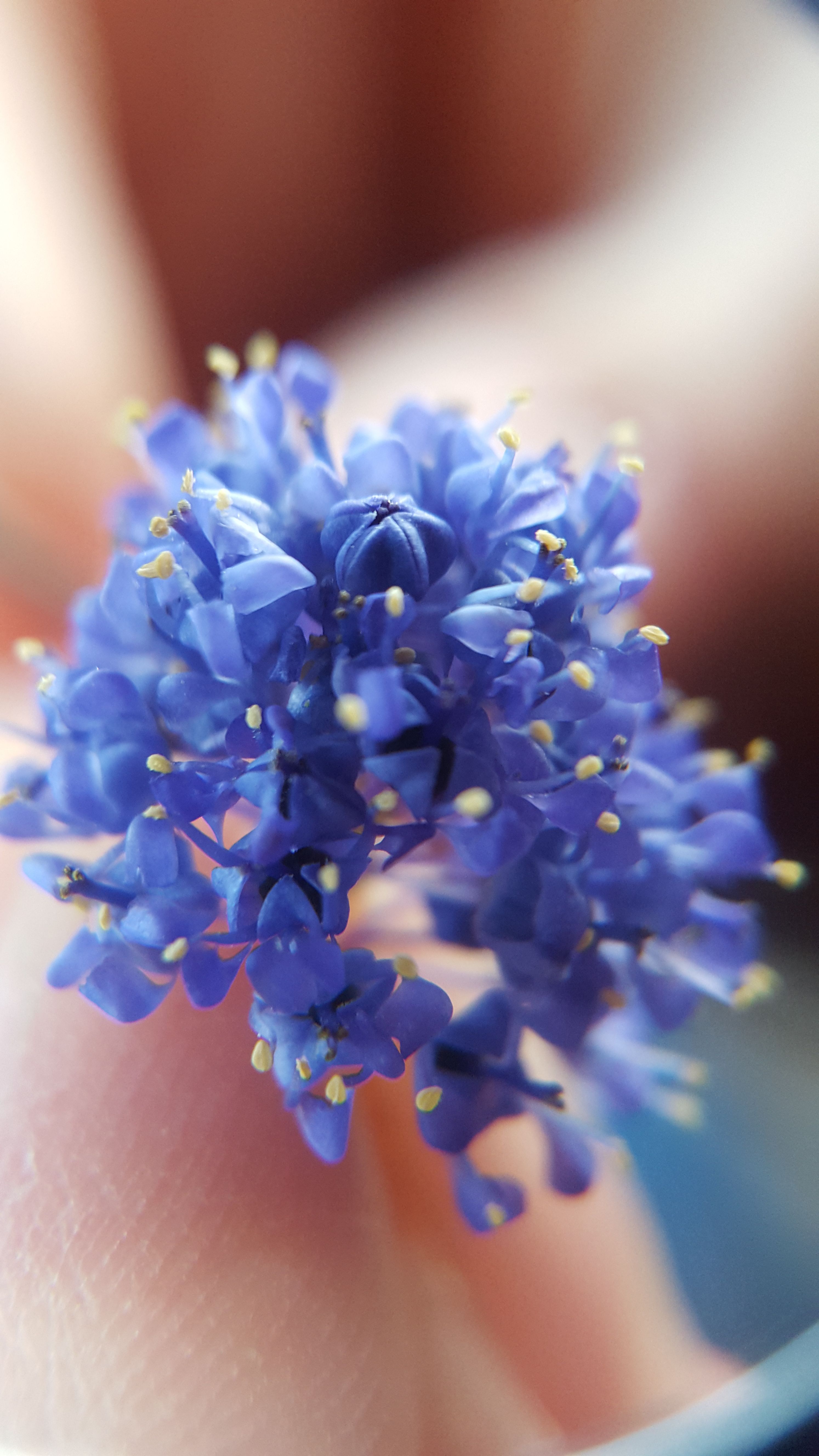
But these absolutely gorgeous creations are Ceanothus gloriosus
They can be found all over the Bay Area, sometimes as a hybridized species. They appear to be quite cold resistant and hardy and grow from an evergreen shrub. This photo was taken through the 40x jewewlers loupe and allows you to see up close the delicate petals, as well as the perfect white stamen and central stigma. These flowers would grow in humongous collections of flowers, covering areas in a graceful blanket of blue.
There were dozens and dozens of other awesome life forms we encountered on the trip. Obviously looking for mushrooms in the dirt and trees has an ancillary benefit of finding just about every other pretty thing there is to find. However, we tried to keep cell phone use to a minimum, and only took photos sparingly.
However, have no doubt, each and every one of the mushrooms in the top photo has been meticulously photographed AND samples brought home with me for microscopic analysis. Not all of them may produce spores - either because they were too young or too old when harvested. But a small part of each of them is here with me now. This one trip resulted in a major increase of my fungal knowledge, and over the next few weeks I will be sharing that insight with all of you.
Photos are my own.
Information Sources:
[1]Kuo, M. (2009, January). Sparassis spathulata and Sparassis crispa: The eastern cauliflower mushrooms. Retrieved from the MushroomExpert.Com
[2]Pleurotus cystidiosus at Specialty Produce
[3]Lentinula edodes, "Shiitake", via Wikipedia
[4]Kuo, M. (2015, February). Craterellus tubaeformis. Retrieved from the MushroomExpert.Com Web site
[5]Hydnum umbilicatum by Thomas J. Volk, University of Wisconsin-La Crosse.
[6]Kuo, M. (2015, February). Craterellus cornucopioides. Retrieved from the MushroomExpert.Com Web site
[7]Cordeyceps sinensis via Wikipedia
[8]Tremella aurantia or Tremella mesenteric, "The Golden Ear", via specialty produce
[9]Agrocybe cylindracea - picture here in the "Velvet Pioppino variant" - via Wikipedia
[10]Pleurotus nebrodensis, the "Nebrodini Bianco", via Wikipedia
[11]Pholiota microspora, of the "Nameko", via wikipedia
[12]Ceanothus gloriosus via wikipedia
[13]Taricha torosa, The California Newt, via Californiaherps.com
Being A SteemStem Member
Your flowering cacti is beautiful!!! I love the vibrant color!
I've always been leery of mushrooms from the forest. I don't know enough to determine which is morels or which are NOT to be eaten.
Always better to be safe than sorry. I'm learning more about fungi all the time, and I never eat my finds. To some degree that's a measure of my own personal risk assessment. But there's no doubt that's the safest approach.
welcome back @dber really nice to hear about your trip and see your beautiful photos, looking forward to reading all about the new knowledge you have acquired.
Thanks @trucklife-family - wish it'd had been a longer vacay, but happy to be back with so much new info. Some of these fungi are real weirdos. :)
I like your post
Post beatifull vey good
I likebthis
Nice post .
thank you
Good writing my freind ..
Your post very interest and picture of you very nice
Welcome back @dber
What amazing Triton, I've never seen in real life!
We do not think it can be a poison, it's so beautiful!